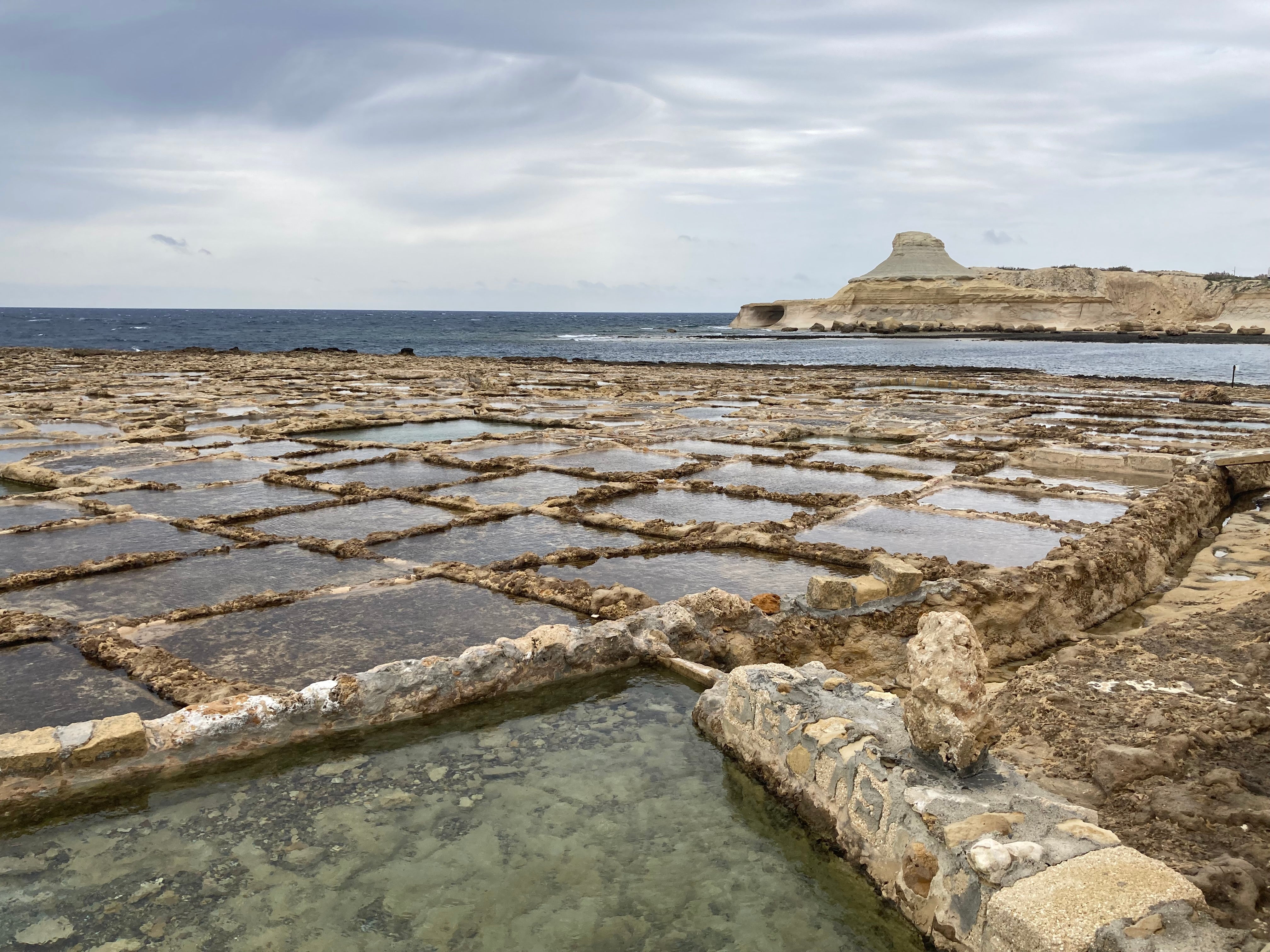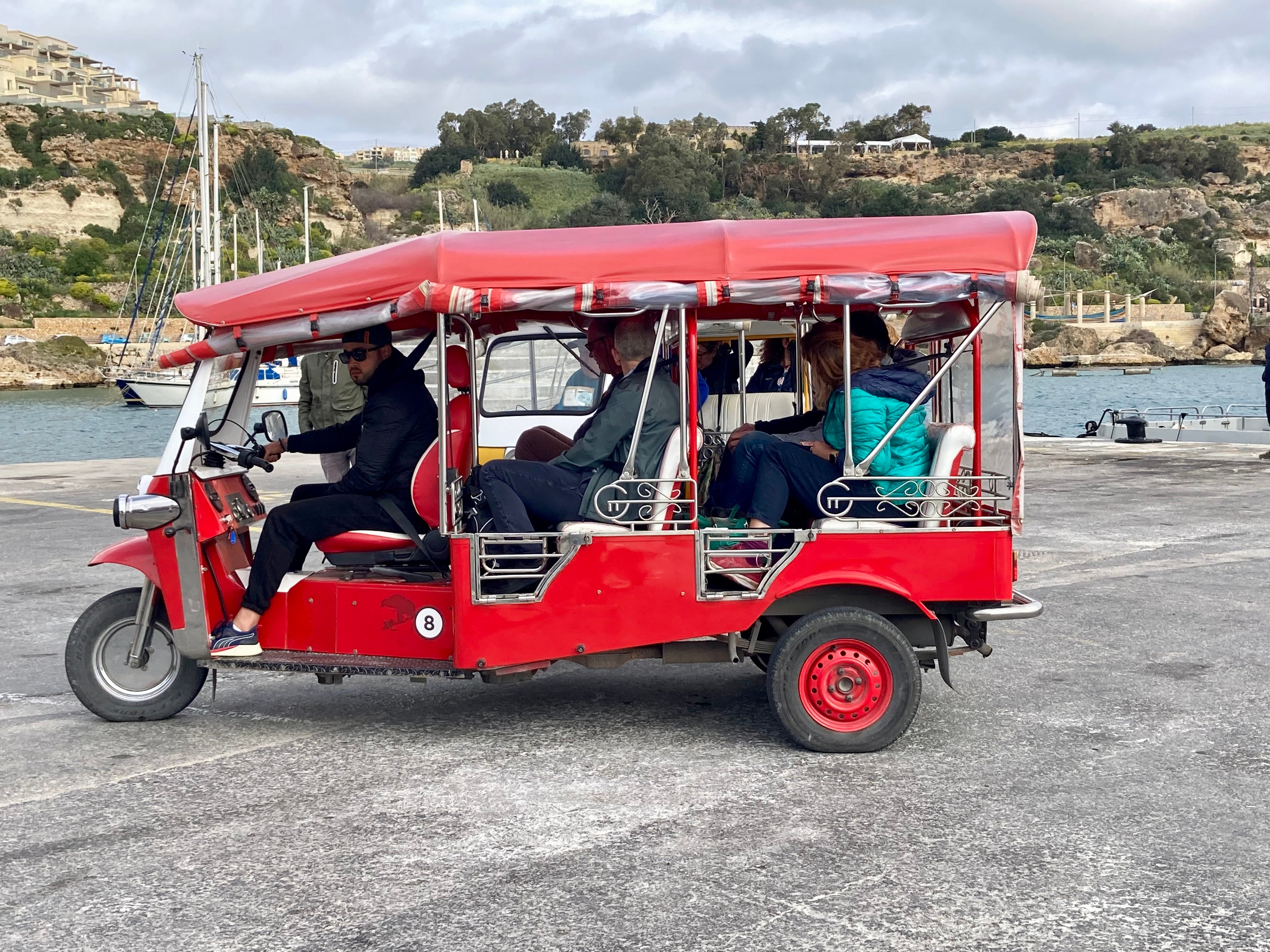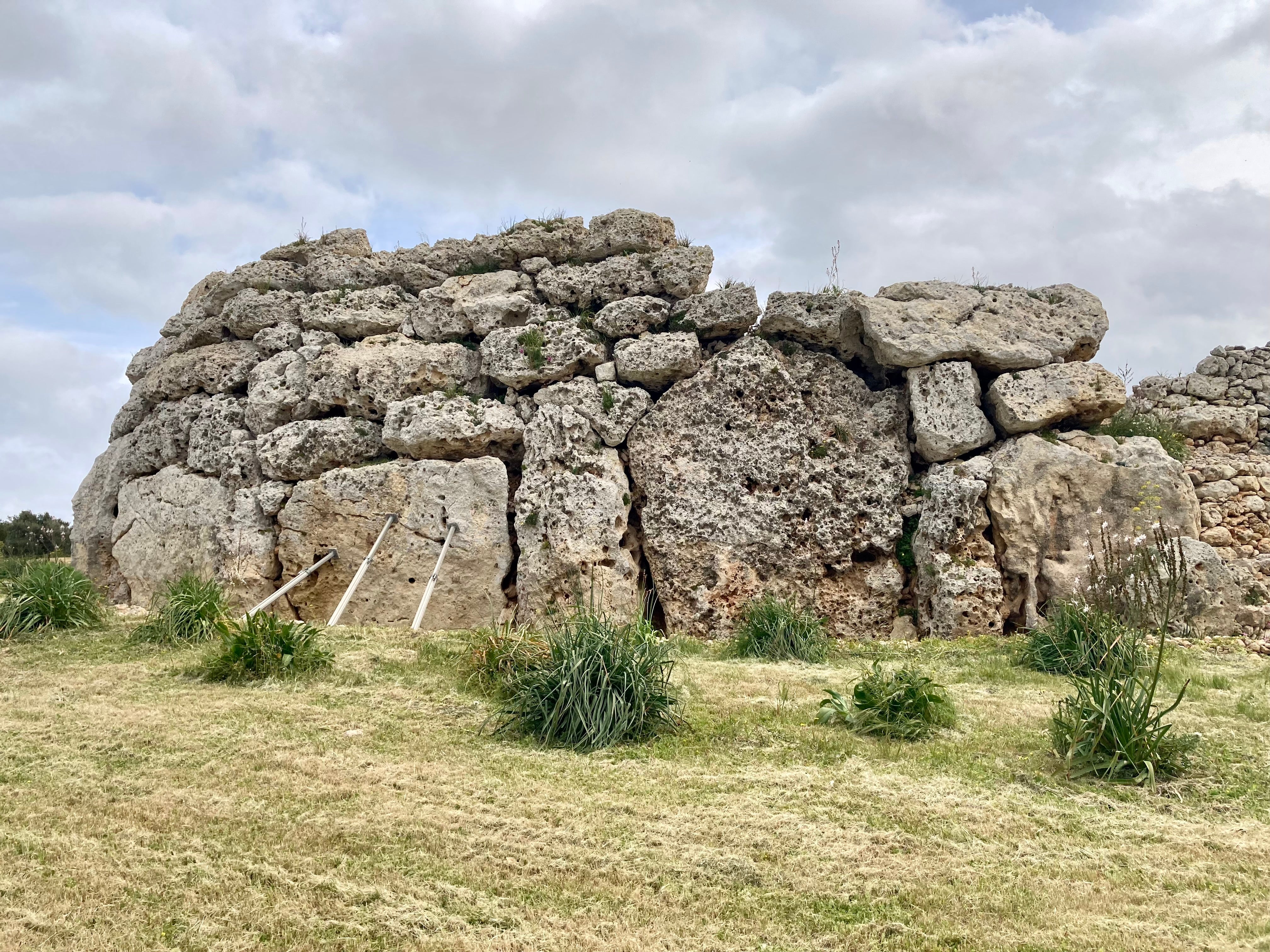How Gozo became one of the greenest islands in the Med
When it comes to sustainability, Malta’s smaller, greener sister is blazing ahead as it aims to become a carbon-free ‘eco island’, writes Kerry Walker

Your support helps us to tell the story
This election is still a dead heat, according to most polls. In a fight with such wafer-thin margins, we need reporters on the ground talking to the people Trump and Harris are courting. Your support allows us to keep sending journalists to the story.
The Independent is trusted by 27 million Americans from across the entire political spectrum every month. Unlike many other quality news outlets, we choose not to lock you out of our reporting and analysis with paywalls. But quality journalism must still be paid for.
Help us keep bring these critical stories to light. Your support makes all the difference.
In a rock-cut cave on the shores of a metallic-blue sea, Alfred Attard waits out the winter surrounded by a clutter of boxes, bags and piles of salt, just as he has for the past 48 years. At Xwejni on the north coast of Gozo, Malta’s smaller sister isle, waves gnaw at ochre-limestone cliffs and a chequerboard of salt pans. On an island defined by the tides, there is nothing more important than salt, yet Alfred is just one of two remaining people who hand-harvest sea salt on the island – the final keepers of a millennia-old tradition. These salt pans have been here, in one form or another, since Phoenician times.
“This is the best salt in the world because it’s 100 per cent natural,” says Alfred, a sprightly, weather-beaten, moustached man, with mischievous blue eyes. His tiny dog, Kiku, curls in a blanket on his lap, and his baseball-capped wife, Mary, sits beside him on a plastic chair. “I learned the art from my stepfather. There’s no machinery – just hot, hard work!” laughs Alfred, holding up the old-fashioned yoke with which he carries two buckets, each laden with 20 kilos of salt.
“From April to October – or until the first storms arrive – I get up at 5am and follow the sun. First, I line the pans with pebbles, then I fill them with saltwater, which I leave to dry for seven days until crystals form. Then I brush the salt into piles, carry it in buckets to the cave and leave it to drip-dry,” he says, gesturing proudly towards a mound of salt in the cave’s antechamber that looks like a giant pile of snow.

Alfred is living proof of the benefits of a simple, happy life lived in harmony with nature and its rhythms. And while the future of hand-harvesting salt may be uncertain, Gozo is very much going back to its green roots.
The driving force behind the island’s aim to achieve carbon neutrality by 2030 is Eco Gozo, which has many strings to its project bow, from tree planting to restoring erosion-preventing rubble walls, organising clean-ups, sustainably managing water, promoting renewable energy, removing plastic debris from the sea and encouraging the use of public transport on the island’s free buses.
Read more on Malta travel:
While many a Mediterranean island has succumbed to mass tourism, Gozo has remained green and peaceful. Rejecting high-rises in favour of a softer, more sustainable approach, the island’s trump card is year-round outdoor adventure, with some of Europe’s best diving, as well as kayaking, surfing, e-biking, deep-water soloing, Segway tours and stand-up-paddleboarding. Nine coastal trails have recently been completed, including a memorably beautiful 13km trail heading along wild cliffs from Mgarr to Xlendi on the south coast. Encircling the island, the 50km Gozo Coastal Walk presents more of a challenge. And there’s more...

“There are big, exciting projects underway,” enthuses Ronald Sultana, director of tourism at the Ministry for Gozo, as we wander along sandy, wildflower-fringed tracks at the Qortin Family Park in Xagħra. “This was the island’s main landfill 10 years ago, stinky and smoggy, but now it has rewilded into a park where families and dog walkers come. We planted 23,000 indigenous shrubs and let nature take its course,” he says, as we wander past wild fennel in bloom, crown daisies and prickly pear cacti where lizards dart.
“Plans are also in the pipeline to repopulate the barren sea bed with an underwater sculpture garden and an artificial reef to attract fish and marine life. It will give the divers and snorkellers who visit the island culture beyond the museums,” Ronald tells me. “Experts are in the process of determining the best location,” he says, as we walk along a rocky track, spring blossom scenting the air.
Suddenly, Ronald stops and ushers me into an easily missed crevice in the rock that widens into a cave, Tal-Mixta, perfectly framing the view of the red-gold crescent of Ramla Bay and the brilliantly azure sea below. It’s silent but for the shush of waves and twitter of birds. The beach saw the return of nesting loggerhead turtles for the first time in 70 years during the pandemic in 2020, Ronald explains. These are the kind of repeat visitors Gozo wants.
While many a Mediterranean island has succumbed to mass tourism, Gozo has remained green and peaceful
Though just a couple of miles from Malta, Gozo moves to its own mellow beat. In one of the island’s electric tuk-tuks, I chatter away to British expat and driver Joe McGinn, as we rumble through terraced fields and countryside planted with almond, carob, citrus and olive trees where cockerels crow. We stop at a lookout in Il-Qala in the island’s east, with views over to the tiny speck of Comino, where two cousins live an almost entirely self-sufficient life, Joe tells me. The most famous of the two, Salvu Vella, is an organic, farmer, fisherman, beekeeper, self-taught engineer and environmental pioneer, who’s always working on his next invention, be it a hydro-powered car or a chemical-free insecticide.
All of this remote island talk makes Gozo’s main town, Victoria (population: 6,900), seem positively cosmopolitan, but only until we reach the thick fortified walls of its showpiece citadel, Ċittadella, inhabited since the Bronze Age and once the acropolis of the Punic-Roman city of Gaulos. From the honey-coloured bastions that wrap around its lattice of alleyways, lush valleys fall away to the sea.
Ducking down a narrow side alley behind the baroque cathedral, I stumble across Ta’ Rikardu, a rustic restaurant serving platters of homemade wine and cheese, run by the owners of a small local farm. The shelves are lined with their own organic products: prickly pear and carob liqueur, sundried tomatoes and cold-pressed extra-virgin olive oil. But I am here to try and buy the one food every Gozitan raves nostalgically about: Ġbejna, little rounds of hand-made sheep cheese, great on bread or in soup. Rikardu rummages around upstairs and emerges with a plate of the fresh variety, sweet, creamy and panna cotta-like, and the air-dried, wine-pickled, pepper-rubbed variety, which is pungent and mouth-puckeringly tangy. I take two boxes.

You’re never more than a whisper away from the sea on Gozo. The wind whistles around cliffs riven with caves and inlets and over a shore rippled with the fossils of extinct sand dollar sea urchins at east-coast Dwejra Bay. Its once-famous Azure Window – the backdrop for the wedding of Khal Drogo and Daenerys Targaryen in season one of Game of Thrones – is no more, but the setting is still pure drama.
The power of the sea here is omnipresent, in the sapphire depths of the Blue Hole and lagoon-like inland sea, beloved of divers, and in the peculiar rock formations. Most notable of the lot is Fungus Rock, a 60m-high chunk of limestone, which takes its misleading name from Maltese fungus (Cynomorium), actually a parasitic flowering plant. The Knights of St John considered it a miracle plant, using it to dress wounds and cure dysentery. Any member of the public caught nabbing some was punished with three years’ oarsmanship in their galleys.
The power of the sea here is omnipresent, in the sapphire depths of the Blue Hole and lagoon-like inland sea
But the medieval Knights were by no means the first to succumb to Gozo’s charms. In the green heart of the island, high atop a plateau, sit the Neolithic Ġgantija Temples, built from coralline limestone between 3600 and 3200 BC, making them older than the pyramids of Egypt. How the immense megaliths got here is a mystery that has found its way into local myth – Ġgantija stems from the Maltese word ġgant, nodding to lore that they were erected by a race of giants.
As I wander into apses of time-eroded, honeycomb-like rock, my guide, Audrey Bartolo, points out fascinating details: the altars for animal sacrifice, the libation holes for liquids (milk, honey, blood), the fertility rites devoted to a mother goddess, the imported traces of obsidian, alabaster, flint and red ochre that suggest the temple builders had travelled far and wide. Some is fact, some is speculation. But about one thing she is convinced: the people who built these temples on Gozo 5,000 years ago were peaceful and nature loving. Not much has changed there then.

Travel essentials
Getting there
Ferries operate every 45 minutes between Cirkewwa on Malta and Mgarr on Gozo. The journey takes 25 minutes.
Staying there
Gozo has a crop of enticing and sustainable sleeps, including Il-Bàrraġ farmhouse B&B in Nadur.
There’s also the eco-certified Duke Boutique Hotel in Victoria, with knockout views of the citadel.
Read more of our best Malta hotel reviews
More information
For a touch of romance, order a gourmet picnic to a beach of your choice with Gozo Picnic.
Join our commenting forum
Join thought-provoking conversations, follow other Independent readers and see their replies
Comments